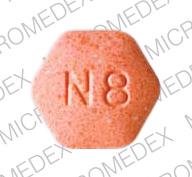Suboxone Interactions
There are 721 drugs known to interact with Suboxone (buprenorphine/naloxone), along with 16 disease interactions, and 1 alcohol/food interaction. Of the total drug interactions, 208 are major, 507 are moderate, and 6 are minor.
- View all 721 medications that may interact with Suboxone
- View Suboxone alcohol/food interactions (1)
- View Suboxone disease interactions (16)
Most frequently checked interactions
View interaction reports for Suboxone (buprenorphine / naloxone) and the medicines listed below.
- Abilify (aripiprazole)
- Adderall (amphetamine / dextroamphetamine)
- Adderall XR (amphetamine / dextroamphetamine)
- alprazolam
- Ambien (zolpidem)
- baclofen
- clonazepam
- clonidine
- Cymbalta (duloxetine)
- gabapentin
- hydroxyzine
- ibuprofen
- Klonopin (clonazepam)
- Lamictal (lamotrigine)
- levothyroxine
- Lexapro (escitalopram)
- lisinopril
- Lyrica (pregabalin)
- Neurontin (gabapentin)
- omeprazole
- prednisone
- propranolol
- Prozac (fluoxetine)
- Seroquel (quetiapine)
- trazodone
- Vitamin D3 (cholecalciferol)
- Vyvanse (lisdexamfetamine)
- Wellbutrin XL (bupropion)
- Xanax (alprazolam)
- Zoloft (sertraline)
Suboxone alcohol/food interactions
There is 1 alcohol/food interaction with Suboxone (buprenorphine / naloxone).
Suboxone disease interactions
There are 16 disease interactions with Suboxone (buprenorphine / naloxone) which include:
- drug dependence
- respiratory depression
- CV disorders
- gastrointestinal obstruction
- intracranial pressure
- adrenal insufficiency
- hypotension
- liver disease
- QT prolongation
- renal dysfunction
- urinary retention
- liver disease
- renal
- septic shock
- seizure disorders
- biliary tract disease
More about Suboxone (buprenorphine / naloxone)
- Suboxone consumer information
- Compare alternatives
- Pricing & coupons
- Reviews (729)
- Drug images
- Latest FDA alerts (2)
- Side effects
- Dosage information
- Patient tips
- During pregnancy
- Generic availability
- Support group
- Drug class: narcotic analgesic combinations
- En español
Related treatment guides
Drug Interaction Classification
| Highly clinically significant. Avoid combinations; the risk of the interaction outweighs the benefit. | |
| Moderately clinically significant. Usually avoid combinations; use it only under special circumstances. | |
| Minimally clinically significant. Minimize risk; assess risk and consider an alternative drug, take steps to circumvent the interaction risk and/or institute a monitoring plan. | |
| No interaction information available. |
Further information
Always consult your healthcare provider to ensure the information displayed on this page applies to your personal circumstances.


